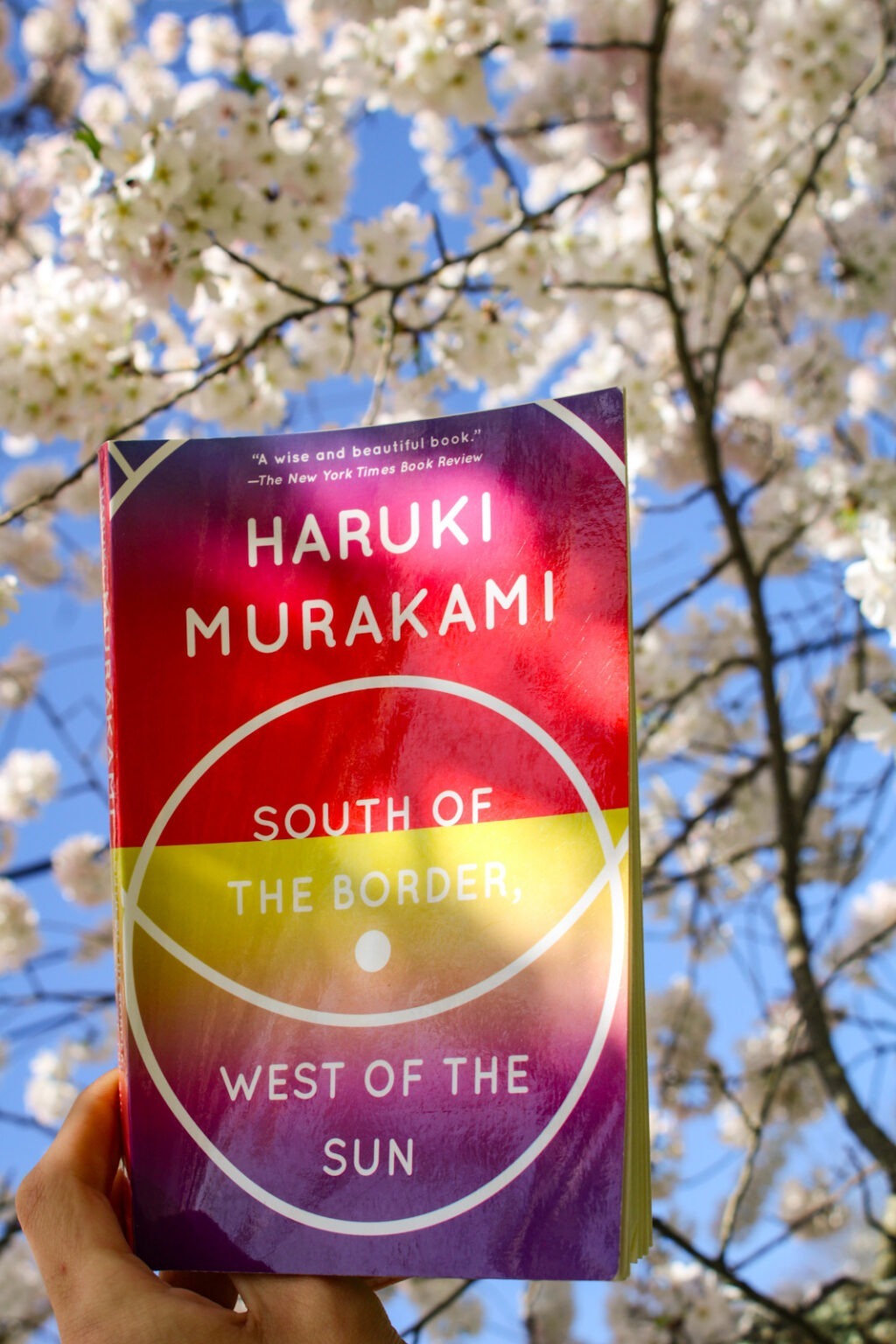Photo Essay: Books in their best reading environments
3 min read
South Of The Border West Of The Sun by Haruki Murakami | Matthew Simmons
MATTHEW SIMMONS
Staff Photographer
There have been many times where I have started a book and never finished it due to the fact that it was completely different than what I was expecting. I have found that even if it is the most popular book of the year, I won’t enjoy it if I am in the wrong headspace or environment to read it in. There is a time and place for everything, and books are not excluded from this idea. For this reason, I have compiled a handful of book recommendations that are paired with a photo of the book in the best space to read them in.
South Of The Border West Of The Sun by Haruki Murakami is one of those beautifully written books that compels you to read outside where your thoughts, feelings and ideas are free to roam around as they please. This novel takes the reader on a journey through the life of a man living in Japan. It follows the decisions he makes and lets both the narrator and reader process feelings of emotional dependency, intuition, and love. Find yourself in a spot under a tree on a warm day, and let the vivid imagery of Murakami handle the rest.
When that inevitable rainy weather, in-bed-all-morning day comes, A Little Life by Hanya Yanagihara would make a great companion. This title has quickly given itself the reputation of being one of the saddest fiction novels in recent years. It documents the lives of four best friends living and chasing their dreams in New York City. Yanagihara does not shy away from the harsh realities of life, and how friendship, sexuality, and success impacts each character in a different way. This upsetting, yet addicting book is best read under a blanket, on a gloomy day, where it is okay to be continuously upset over the span of a single book.
If I had to choose a book that everyone must read before they die, Sapiens by Yuval Noah Harari would be an easy pick. Sapiens creates a timeline of how human life has changed throughout history, as well as where we are heading. Harari’s patience and attention to detail have created a history book that is just as interesting as it is digestible. It covers topics discussing imagined reality, why the agricultural revolution might have been the biggest scam in history, and what sets us apart from every other species on earth. There is a lot of information across its 400 plus pages, which makes reading it in small doses ideal. Throw this in your to-go bag and read it while in between metro stops, standing in line or waiting for your next class to start.
The Lightkeepers written by Abby Geni is a suspenseful slow burner that puts every person and event from the plot into question. Miranda, a nature photographer, travels to a mysterious island where death, rats, and strange events are regularly encountered. Geni has written her novel in a way that transports the reader to this dark archipelago where nature is the one in control. Reading this in the forest or alongside a river will give the audience a quiet space for the reader to take note of the small details and provide an environment that can aid in its visualization.
The closing title featured on this list is the Russian fantasy novel Vita Nostra, written by Marina and Sergey Dyachenko. The plot follows a student named Sasha who is forced to attend a special technologies university. Things quickly begin to change as she grapples to keep up with this new environment, while also coming to realize her full potential and abilities. Vita Nostra has a fresh take on the world of magic that is different from anything we’ve seen in literature before. Its dark and mysterious scenes in the streets of a small town in Russia make it perfect for reading in a dimly lit room before heading to bed.







